
Rethymno: A Jewel on Crete's Coastline
Discover Rethymno, a vibrant blend of Venetian architecture, stunning beaches, and rich Cretan culture. Experience history, cuisine, and picturesque landscapes in one captivating destination.
Rethymno, a captivating city on the northern coast of Crete, is a blend of Venetian charm and Greek tradition. Wander through its narrow cobblestone streets and discover a rich history that dates back to the 16th century. The Venetian Fortezza, a massive fortress overlooking the city, offers stunning views of the sea and the town below. The old town is a maze of picturesque alleyways filled with vibrant shops, cafes, and taverns serving delicious Cretan cuisine. The city's waterfront is a bustling hub of activity, with a long sandy beach perfect for sunbathing and swimming. The Venetian harbor, lined with colorful fishing boats and waterfront restaurants, is an ideal spot for an evening stroll. Rethymno's lively atmosphere is further enhanced by its numerous festivals and cultural events, including the famous Renaissance Festival held every summer. Beyond the city, the surrounding countryside offers stunning landscapes, from the lush gorges of Mount Psiloritis to the serene beaches of the south coast. Visit the Arkadi Monastery, a symbol of Cretan resistance, or explore the charming villages dotted around the region. Rethymno is a place where history, culture, and natural beauty come together to create an unforgettable travel experience.
Local tips in Rethymno
- Visit the Venetian Fortezza early in the morning to avoid the crowds and enjoy the best views.
- Explore the old town on foot to fully appreciate its narrow alleys and hidden gems.
- Try local specialties like 'dakos' and 'kalitsounia' at a traditional taverna.
- Rent a car to explore the surrounding countryside and visit the Arkadi Monastery.
- Don't miss the Renaissance Festival if you're visiting in the summer.
- Stay at a boutique hotel in the old town for an authentic experience.
Rethymno: A Jewel on Crete's Coastline
Rethymno, a captivating city on the northern coast of Crete, is a blend of Venetian charm and Greek tradition. Wander through its narrow cobblestone streets and discover a rich history that dates back to the 16th century. The Venetian Fortezza, a massive fortress overlooking the city, offers stunning views of the sea and the town below. The old town is a maze of picturesque alleyways filled with vibrant shops, cafes, and taverns serving delicious Cretan cuisine. The city's waterfront is a bustling hub of activity, with a long sandy beach perfect for sunbathing and swimming. The Venetian harbor, lined with colorful fishing boats and waterfront restaurants, is an ideal spot for an evening stroll. Rethymno's lively atmosphere is further enhanced by its numerous festivals and cultural events, including the famous Renaissance Festival held every summer. Beyond the city, the surrounding countryside offers stunning landscapes, from the lush gorges of Mount Psiloritis to the serene beaches of the south coast. Visit the Arkadi Monastery, a symbol of Cretan resistance, or explore the charming villages dotted around the region. Rethymno is a place where history, culture, and natural beauty come together to create an unforgettable travel experience.
When is the best time to go to Rethymno?
Iconic landmarks you can’t miss
Venetian Fortezza Castle
Discover the breathtaking Venetian Fortezza Castle in Rethimno, a magnificent historical fortress with panoramic views and rich cultural heritage.

Rimondi Fountain
Explore the historic Rimondi Fountain in Rethymno, a stunning Renaissance landmark surrounded by vibrant culture and local charm.

Rethymnon Municipal Garden
Explore the serene beauty of Rethymnon Municipal Garden, a lush retreat filled with vibrant flora and rich history in the heart of Crete.

Guora gate
Explore the Guora Gate in Rethymno, a stunning historical landmark reflecting the Venetian influence and rich cultural heritage of Crete.

Rethymnon beach
Discover the stunning Rethymnon Beach in Crete, where golden sands meet crystal-clear waters, ideal for relaxation, fun, and local culinary delights.

Ali Vafi's garden
Discover Ali Vafi's Garden in Rethymno, where exquisite flavors and a serene atmosphere create a perfect dining experience.

Iroon Politechniou Square
Explore Iroon Politechniou Square in Rethymno, Greece - a vibrant park blending history, local culture, and relaxation in the heart of Crete.

Archaeological Museum of Rethymnon
Explore ancient wonders at the Archaeological Museum of Rethymnon, a rich testament to Crete's historical legacy and cultural heritage.
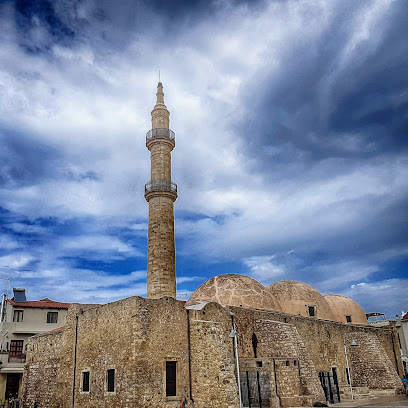
Port of Rethymnon
Explore the vibrant Port of Rethymnon, where stunning views, delicious cuisine, and rich history come together in a perfect Cretan experience.

Nafpigio
Discover Nafpigio, Rethymno's premier cocktail bar and coffee store, where expertly crafted drinks meet a vibrant atmosphere.

Rethymnon Lighthouse
Explore Rethymnon Lighthouse, a historical gem revealing the charm of Crete's maritime heritage with stunning coastal views and rich cultural significance.

Biotopoi of Crete Nature Park
Explore the breathtaking Biotopoi of Crete Nature Park, a wildlife haven in Rethymno, showcasing Crete's unique ecosystems and rich biodiversity.

Neratze Mosque
Explore the captivating Neratze Mosque in Rethymno, a heritage museum that reflects the island's rich cultural history and architectural beauty.

Paleontological Museum of Rethymno
Explore the rich prehistoric past at the Paleontological Museum of Rethymno, where ancient fossils and history come to life in a captivating setting.

Προκυμαία Ρεθύμνου
Discover the enchanting charm of Prokymania in Rethymno, where history meets stunning architecture in a captivating Cretan experience.
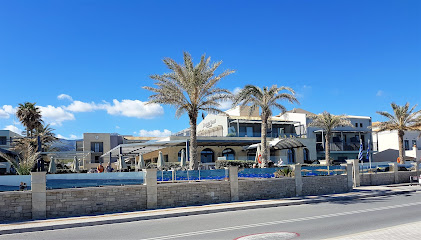
Unmissable attractions to see
Fortezza of Rethymnon
Discover the historic Fortezza of Rethymnon, a Venetian fortress that offers stunning views and a glimpse into Crete's rich past.

Old Chania Market
Experience the vibrant atmosphere of Old Chania Market, a historical hub of local culture and authentic Cretan flavors in the heart of Chania.

Rimondi Fountain
Explore the enchanting Rimondi Fountain in Rethymno, a stunning historical landmark showcasing Venetian artistry and vibrant local culture.

Preveli beach
Experience the breathtaking beauty and tranquility of Preveli Beach, Crete's hidden paradise where nature and relaxation meet.

Seitan Limania
Discover the breathtaking beauty of Seitan Limania, a hidden gem on Crete's coast with stunning cliffs and crystal-clear waters.

Arkadi Monastery
Explore the serene beauty and rich history of Arkadi Monastery, a symbol of resilience in Crete's picturesque landscape.

Minoan Palace of Phaistos
Explore the Minoan Palace of Phaistos, a historical jewel of ancient Crete, rich in culture, architecture, and breathtaking landscapes.

Melidoni Cave
Explore the historical Melidoni Cave, a stunning natural marvel in Rethymni, Crete, revealing ancient secrets and breathtaking beauty.

Rethymnon Municipal Garden
Discover the serene beauty of Rethymnon Municipal Garden, a lush oasis in Rethymno, Greece, perfect for relaxation, picnics, and cultural experiences.

Holy Trinity (Agia Triada) Tzagaroli Monastery
Experience the tranquil beauty and rich heritage of Holy Trinity Monastery in Chania, a must-visit tourist attraction for a serene escape.

Kourtaliotiko Gorge
Explore the breathtaking Kourtaliotiko Gorge in Crete, a nature lover's paradise with stunning views, diverse wildlife, and rich cultural heritage.

Guora gate
Explore the stunning Guora Gate in Rethymno, a historical landmark and tourist attraction that captures the essence of Crete's rich cultural heritage.

Limnoupolis
Experience the ultimate water adventure at Limnoupolis, the premier water park in Chania, Greece, perfect for families and thrill-seekers alike.

Marathi Beach
Experience the serene beauty of Marathi Beach, a hidden gem in Crete, perfect for relaxation, family fun, and delicious Cretan cuisine.

Sfendoni Cave in Zoniana
Discover the enchanting Sfendoni Cave in Zoniana, a stunning natural wonder filled with mesmerizing stalactites and stalagmites, perfect for adventurous travelers.

Essential places to dine
Prima Plora Οrganic Restaurant & Wine Bar
Experience the best of organic dining at Prima Plora Organic Restaurant & Wine Bar in Rethymno - where flavor meets sustainability.

Lemonokipos Restaurant
Experience authentic Greek cuisine under lemon trees at Lemonokipos Restaurant in Rethymno - where tradition meets flavor.

Castelo Restaurant
Discover authentic Greek flavors at Castelo Restaurant in Rethymno—where every dish tells a story of tradition and culinary excellence.

Asikiko
Experience authentic Greek flavors at Asikiko in Rethymno – a must-visit culinary destination for every traveler.

To Pigadi Restaurant
Experience authentic Mediterranean cuisine at To Pigadi Restaurant in Rethymno - a delightful blend of flavors and Cretan hospitality.

Achinos Rethymno
Experience authentic Greek flavors at Achinos Rethymno – where tradition meets culinary excellence in picturesque Crete.

Alana Restaurant
Experience authentic Cretan cuisine at Alana Restaurant in Rethymno - where tradition meets innovation in every dish.
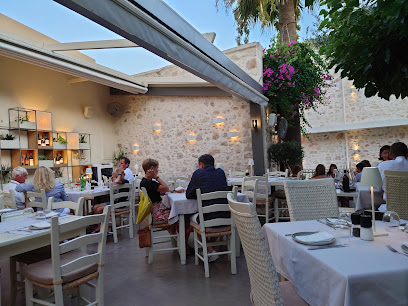
CAVO Rethymnon Restaurant
Discover culinary excellence at CAVO Rethymnon Restaurant—where traditional Cretan flavors meet modern gastronomy in a stunning coastal setting.

Avli rustic fine dining restaurant
Experience exquisite Greek cuisine at Avli rustic fine dining restaurant in Rethymno - where tradition meets culinary artistry.

VATANIA Taverna meze bar
Savor authentic Greek cuisine at VATANIA Taverna Meze Bar in Rethymno - where every dish tells a story.
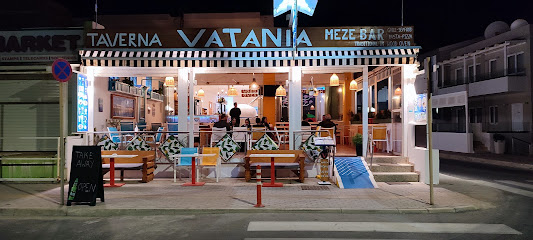
Manolis Place
Savor authentic Greek flavors at Manolis Place in Rethymno – where tradition meets taste in every dish.

To Parastratima
Experience authentic Cretan flavors at To Parastratima, Rethymno's favorite small plates restaurant offering fresh ingredients and vibrant atmosphere.

PAGLIACCIO
Experience exquisite Italian dining at Pagliaccio in Rethymno, where fresh seafood and artisanal pizzas await you.

Hercules Restaurant Rethimno
Experience the essence of Greece at Hercules Restaurant Rethimno with authentic flavors and warm hospitality.

Petite Fleur
Experience exquisite Mediterranean dining at Petite Fleur in Rethymno – where flavor meets ambiance.

Markets, malls and hidden boutiques
E-shop point Ρέθυμνο
Explore E-shop Point Rethymno for cutting-edge electronics, top-notch cameras, and unique musical instruments in the heart of Crete.

INTERSPORT ATHLETICS A.E.E.
Explore Rethymno's premier sporting goods store for all your athletic needs, from top-quality footwear to essential sports gear.

Welcome Stores (ΣΟΥΜΠΑΣΑΚΗΣ)
Discover the latest electronics and gadgets at Welcome Stores in Rethymno, where exceptional service meets cutting-edge technology.

Stradivarius
Discover contemporary women's fashion at Stradivarius in Rethymno, where style meets affordability in a chic shopping experience.

Pink Woman
Explore Pink Woman in Rethymno for trendy women's clothing that blends style with comfort, perfect for every occasion.

Cretan Lyra workshop - Stagakis museum - Traditional instruments
Explore the heart of Cretan music at the Cretan Lyra workshop, where tradition and craftsmanship converge in Rethymno.

The Olive Garden | Premium Greek Natural Cosmetics, Beach Road shop
Discover the essence of Greek beauty at The Olive Garden, your premier destination for natural cosmetics and perfumes in Rethymno.

Thursday market
Experience the charm and flavors of Crete at the Thursday Market in Rethymno, a vibrant hub for fresh produce and local treasures.

AGORA Shops 1
Explore AGORA Shops 1 in Rethymno for stylish fashion accessories that capture the spirit of the Mediterranean.

rethymno souvenir center
Explore the Rethymno Souvenir Center for unique Cretan crafts, local delicacies, and a vibrant taste of the island's rich heritage.
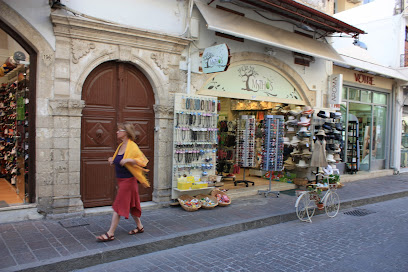
U-Silk
Explore U-Silk in Rethymno for unique fashion pieces that blend modern style with local charm, perfect for your Mediterranean adventure.
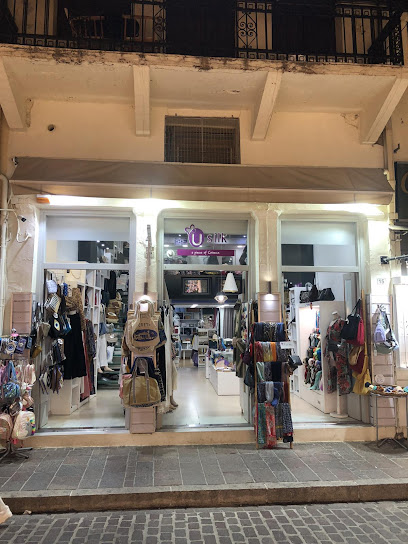
Souvenirs Store Rethymno Shopping
Explore the Souvenirs Store in Rethymno for unique gifts, local crafts, and traditional musical instruments that embody the spirit of Crete.

Tourist Store Kalimera (G. Liokalos)
Explore local fashion and unique souvenirs at Tourist Store Kalimera in Rethymno, where style meets Cretan culture.

Alda
Explore Alda in Rethymno, a premier gift shop offering exquisite local crafts and unique souvenirs reflecting the beauty of Cretan culture.

Blanc du Nil Store
Explore the Blanc du Nil Store in Rethimno for unique clothing that embodies the spirit of Crete, perfect for fashion-forward travelers.

Essential bars & hidden hideouts
Fraoules
Experience the vibrant café culture of Rethymno at Fraoules, where delightful drinks and delicious bites await in a cozy atmosphere.

LivingRoom GastroBar Rethymnon
Discover LivingRoom GastroBar in Rethymnon: where modern cuisine meets Cretan tradition and vibrant cocktails create unforgettable experiences.

Queens Room Club Restaurant
Experience the perfect blend of Asian cuisine and dynamic nightlife at Queens Room Club Restaurant in Rethymno, where every night is a celebration.

BORA BORA
Discover the lively Bora Bora cocktail bar in Rethymno, Greece, where refreshing drinks, delightful meals, and a vibrant atmosphere await.

Chaplins
Experience the vibrant atmosphere and delicious cuisine at Chaplins, Rethymno's premier gastropub and bar.

Cul de Sac - Cafe - Bar - Restaurant
Discover Cul de Sac in Rethymno: a perfect blend of coffee shop, cocktail bar, and dining experience amidst the charm of Greece.

Achinos Rethymno
Discover the essence of Greek cuisine at Achinos Rethymno, where traditional flavors meet modern dining in the heart of Crete.

CAVO Rethymnon Restaurant
Experience the best of Cretan cuisine and cocktails at CAVO Rethymnon, where every meal is a celebration of flavors and views.

Monitor Art Café
Discover the artistic vibe of Rethymno at Monitor Art Café, a vibrant bar with a creative atmosphere and a diverse selection of beers.

Bonobo Bar
Discover Bonobo Bar: Rethymno’s trendy spot for artisan coffee and vibrant nightlife, blending relaxation and social energy in a stylish setting.

Nafpigio
Discover the vibrant Nafpigio cocktail bar in Rethymno, where exceptional drinks and a lively atmosphere come together for an unforgettable experience.

Home Seaside | Cocktail Bar
Discover the vibrant atmosphere of Home Seaside, Rethymno's premier cocktail bar offering stunning sea views and refreshing drinks.

Antika Irish Bar
Discover the lively Antika Irish Bar in Rethymno, where vibrant atmosphere meets friendly Irish hospitality, perfect for a memorable night out.

Lakis beach bar
Experience the vibrant atmosphere and stunning views at Lakis Beach Bar, a perfect seaside retreat in Rethimno, Greece.

Rewine
Indulge in a world of exquisite wines at Rewine, Rethymno's premier wine bar, offering a cozy atmosphere and exceptional service.
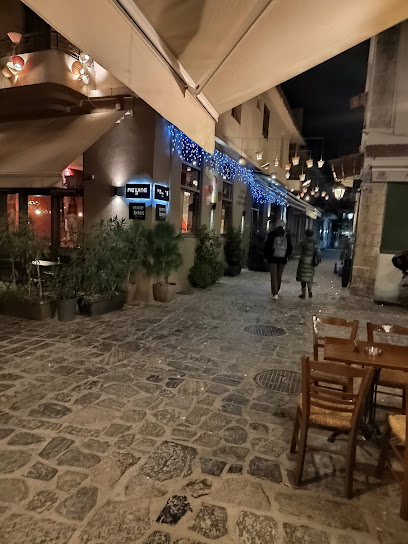
Travel experiences inspired by this city
Explore more travel diariesLocal Phrases
-
- HelloΓεια σας
[Ya sas] - GoodbyeΑντίο
[Adio] - YesΝαι
[Ne] - NoΌχι
[Ohi] - Please/You're welcomeΠαρακαλώ
[Parakalo] - Thank youΕυχαριστώ
[Efharisto] - Excuse me/SorryΣυγνώμη
[Signomi] - How are you?Τι κάνετε;
[Ti kanete?] - Fine. And you?Καλά. Εσείς;
[Kala. Esis?] - Do you speak English?Μιλάτε αγγλικά;
[Milate anglika?] - I don't understandΔεν καταλαβαίνω
[Den katalaveno]
- HelloΓεια σας
-
- I'd like to see the menu, pleaseΘα ήθελα να δω το μενού, παρακαλώ
[Tha ithela na do to menou, parakalo] - I don't eat meatΔεν τρώω κρέας
[Den troo kreas] - Cheers!Υγεία!
[Ygeia!] - I would like to pay, pleaseΘα ήθελα να πληρώσω, παρακαλώ
[Tha ithela na plirosou, parakalo]
- I'd like to see the menu, pleaseΘα ήθελα να δω το μενού, παρακαλώ
-
- Help!Βοήθεια!
[Voithia!] - Go away!Φύγε!
[Fyge!] - Call the Police!Καλέστε την Αστυνομία!
[Kaleste tin Astynomia!] - Call a doctor!Καλέστε γιατρό!
[Kaleste giatro!] - I'm lostΈχω χαθεί
[Eho hathi] - I'm illΕίμαι άρρωστος
[Eimai arrostos]
- Help!Βοήθεια!
-
- I'd like to buy...Θα ήθελα να αγοράσω...
[Tha ithela na agoraso...] - I'm just lookingΑπλά κοιτάω
[Apla kitao] - How much is it?Πόσο κοστίζει;
[Poso kostizi?] - That's too expensiveΑυτό είναι πολύ ακριβό
[Afto ine poli akribo] - Can you lower the price?Μπορείτε να μειώσετε την τιμή;
[Borite na miosete tin timi?]
- I'd like to buy...Θα ήθελα να αγοράσω...
-
- What time is it?Τι ώρα είναι;
[Ti ora ine?] - It's one o'clockΕίναι μία ώρα
[Ine mia ora] - Half past (10)Μισή (10)
[Misi (dekα)] - MorningΠρωί
[Proi] - AfternoonΑπόγευμα
[Apogeuma] - EveningΒράδυ
[Vradi] - YesterdayΧθες
[Hthes] - TodayΣήμερα
[Simera] - TomorrowΑύριο
[Avrio] - 1Ένα
[Ena] - 2Δύο
[Dio] - 3Τρία
[Tria] - 4Τέσσερα
[Tessera] - 5Πέντε
[Pente] - 6Έξι
[Exi] - 7Εφτά
[Efta] - 8Οχτώ
[Ochto] - 9Εννιά
[Ennia] - 10Δέκα
[Deka]
- What time is it?Τι ώρα είναι;
-
- Where's a/the...?Πού είναι ένα/το...;
[Pou ine ena/to...?] - What's the address?Ποια είναι η διεύθυνση;
[Pia ine i diefthinsi?] - Can you show me (on the map)?Μπορείτε να μου δείξετε (στο χάρτη);
[Borite na mou dixete (sto charti)?] - When's the next (bus)?Πότε είναι το επόμενο (λεωφορείο);
[Pote ine to epomeno (leoforeio)?] - A ticket (to ....)Ένα εισιτήριο (για ....)
[Ena isitirio (ya ....)]
- Where's a/the...?Πού είναι ένα/το...;
History of Rethymno
-
Rethymno, situated on the northern coast of Crete, has ancient roots that date back to the Minoan civilization, around 1600 BCE. The city was an important center of Minoan culture and trade. Archaeological excavations have unearthed artifacts such as pottery, tools, and remnants of ancient structures, revealing the rich heritage and early urban development of the area.
-
During the Classical and Hellenistic periods, Rethymno continued to thrive as a prominent city-state. The influence of Greek culture became more pronounced, and the city was known for its temples, public buildings, and bustling marketplaces. The strategic location of Rethymno made it a vital hub for maritime trade and cultural exchange in the Mediterranean.
-
With the Roman conquest of Crete in 67 BCE, Rethymno became part of the Roman Empire. The city saw the construction of grand structures such as aqueducts, baths, and villas. Later, during the Byzantine era, Rethymno flourished as a religious and administrative center. The cityscape was adorned with churches and fortifications, reflecting the Byzantine architectural style.
-
In 1204, following the Fourth Crusade, Crete came under Venetian control, and Rethymno experienced a period of significant transformation. The Venetians fortified the city with impressive walls and constructed the iconic Fortezza, a massive fortress that still dominates the landscape. The city’s layout was restructured, and elegant Renaissance buildings, fountains, and squares were established, reflecting Venetian architectural influence.
-
Rethymno fell to the Ottomans in 1646 after a protracted siege. The Ottoman period introduced new elements to the city's culture and architecture. Mosques were built, and the Neratze Mosque, originally a Venetian church, became a prominent landmark. The cityscape featured a blend of Venetian and Ottoman styles, with narrow streets and bustling bazaars adding to the vibrant atmosphere.
-
In the early 20th century, Rethymno played a crucial role in the Cretan struggle for independence from Ottoman rule, which eventually led to the union of Crete with Greece in 1913. The city has since evolved into a modern urban center, balancing its rich historical legacy with contemporary developments. Today, Rethymno is known for its preserved old town, charming Venetian harbor, and cultural festivals that celebrate its diverse history.
Rethymno Essentials
-
Rethymno is located on the northern coast of Crete, Greece. The nearest international airports are Chania International Airport (approximately 65 kilometers west) and Heraklion International Airport (approximately 80 kilometers east). From either airport, you can take a bus, taxi, or rent a car to reach Rethymno. Ferry services are also available from the mainland to the port of Rethymno, offering a scenic journey across the Aegean Sea.
-
Rethymno is a compact city, and many attractions are within walking distance. For longer distances, local buses operate regularly, connecting various parts of the city and surrounding areas. Taxis are readily available and can be hailed on the street or booked in advance. For more flexibility, you can rent a car, scooter, or bicycle. Note that driving in the city center can be challenging due to narrow streets and limited parking.
-
The official currency in Greece is the Euro (EUR). Credit and debit cards are widely accepted in hotels, restaurants, and shops. ATMs are plentiful throughout Rethymno, and you can use them to withdraw cash. It is advisable to carry some cash with you, especially for small purchases or in rural areas where card payments may not be accepted.
-
Rethymno is generally a safe destination for tourists. However, as with any travel destination, it is important to take standard precautions. Avoid walking alone at night in unfamiliar areas and keep an eye on your belongings in crowded places. Petty theft and pickpocketing can occur, particularly in tourist-heavy areas. There are no specific high-crime neighborhoods targeting tourists in Rethymno.
-
In case of emergency, dial 112 for immediate assistance, which is the pan-European emergency number. Rethymno has a local hospital and several medical clinics for health emergencies. Pharmacies are available throughout the city for minor health issues and over-the-counter medications. It is recommended to have travel insurance that covers medical emergencies.
-
Fashion: Do dress modestly, especially when visiting religious sites. Avoid wearing revealing or beachwear outside of beach areas. Religion: Do respect local customs and traditions. Always cover your shoulders and knees when entering churches and monasteries. Public Transport: Do be respectful and offer your seat to elderly passengers. Don't eat or drink on public transport. Greetings: Do greet people with a handshake. A friendly 'Kalimera' (Good Morning) or 'Kalispera' (Good Evening) is appreciated. Eating & Drinking: Do try local delicacies and accept food offerings graciously. Don't leave a tip directly on the table; instead, hand it to the waiter or place it in the provided tip jar.
-
To experience Rethymno like a local, visit the weekly farmers' market where you can buy fresh produce and traditional Cretan goods. Engage with locals at the many cafes and tavernas, as they are often friendly and willing to share stories about the city's history and culture. Don't miss a stroll through the old town, with its narrow streets, Venetian architecture, and hidden courtyards. For a unique experience, attend a local festival or event, such as the Rethymno Carnival or the Renaissance Festival, to immerse yourself in the vibrant local culture.
Trending Landmark in Rethymno
-
Venetian Fortezza Castle
-
Rimondi Fountain
-
Rethymnon Municipal Garden
-
Guora gate
-
Rethymnon beach
-
Ali Vafi's garden
-
Iroon Politechniou Square
-
Archaeological Museum of Rethymnon
-
Port of Rethymnon
-
Nafpigio
-
Rethymnon Lighthouse
-
Biotopoi of Crete Nature Park
-
Neratze Mosque
-
Paleontological Museum of Rethymno
-
Προκυμαία Ρεθύμνου
Nearby Cities to Rethymno
-
Things To Do in Crete
-
Things To Do in Chania
-
Things To Do in Heraklion
-
Things To Do in Pyrgos
-
Things To Do in Santorini
-
Things To Do in Mykonos
-
Things To Do in Kalamata
-
Things To Do in Nafplio
-
Things To Do in Athens
-
Things To Do in Kos
-
Things To Do in Bodrum
-
Things To Do in Samos
-
Things To Do in Rhodes
-
Things To Do in Olympia
-
Things To Do in Kusadasi



















